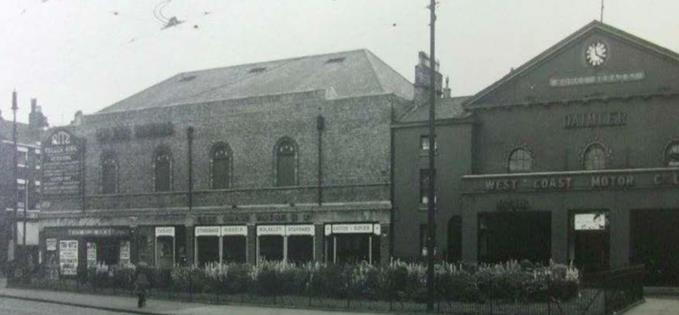The 1930s rolling skating rink in Catharine Street, threatened with demolition to pave the way for an eight-storey block of student flats, has lost a vital battle for its survival.
Culture Secretary John Whittingdale has decided that the building, for many years the Rodney Youth Club, should not be given the protection of listed status.
Even so the Government’s cultural watchdogs, Historic England, says the building is of clear local interest which positively contributes to the Canning Street conservation area in which it stands.
Historic England carried out a full study of the building, originally known as the Ritz Roller Rink, after local resident John Bradley applied to have it given listed status to save it from the bulldozer.
After being officially informed the decision, Bradley told Liverpool Confidential: “Of course I'm disappointed but hopefully the level of local support might encourage the developers to think again.
“If they were to re-orientate their plans to use only the area that the current Avis building sits on and the forecourt in front, with perhaps a couple of extra stories or perhaps an overhang, they could use the Ritz to provide the entrance to the building. It could also be used for some of the retail space the developer wants, or perhaps some facilities for the residents, and the building could still be saved.”
 The proposed eight storey block of flats which is set to replace the roller rink
The proposed eight storey block of flats which is set to replace the roller rinkThe official Historic England report states that the local authority conservation officer responded to confirm that a planning application for demolition and redevelopment of the site has been submitted, and to state that the building sits within the Canning Street Conservation Area and sits comfortably with adjoining late-Georgian terraces.
City Council planning officers responded to Historic England by saying they had no comment to make.
The vedict: Local interest - but beyond that nothing special

A consultant’s report, prepared for the developer of an eight storey block of student flats on the site of the former Ritz roller rink, said it did not believe 1930s building was listable.
It said the architects of the rink were not of national renown and that the roller rink was not innovative at the time of its construction. Additionally, it has been altered and the interior is no longer legible.
However, Government watchdog Historic England points out that one of the building’s architects was Frederick Orchard Lawrence (1893-1971). A student of Charles Reilly at the Liverpool School of Architecture, Lawrence won the prestigious Rome Scholarship in 1920. He later joined Briggs and Thornely where he worked on the competition drawings of Herbert Rowse's India Buildings and also the Parliament Building in Northern Ireland.
The Love Canning Business Neighbourhood Forum backed the call for listing, saying the building's design is elegant and its architectural style epitomises its time, complementing surrounding buildings.
 The Ritz roller rink designed by Frederick Orchard Lawrence
The Ritz roller rink designed by Frederick Orchard LawrenceMerseyside Civic Society told Historic England that the roller rink interior is a rare survivor and that the building contributes to the city's stock of inter-war buildings that is slowly being eroded. The society said the rink building forms part of a group of inter-war buildings along Myrtle Street, including Herbert J. Rowse’s Philharmonic Hall (Grade II* listed), and A. Minoprio & H. Grenville Spencely’s extension to the Royal School for the Blind at the junction with Hardman Street (Grade II listed).
Historic England’s assessment said externally the building's cinema-influenced and restrained Art Deco styling clearly reflected the original owner, New Hope Hall Cinema Limited, and it is an interesting example of a cinema company diversifying into another form of recreational entertainment.
In addition, whilst most older roller rinks were speculative buildings constructed cheaply, the former Ritz Roller Rink building is atypical in incorporating some level of architectural distinction into its exterior form.
Commenting on the rink surface, Historic England said maple roller-rink floors were introduced in the early 1900s to reduce injuries often sustained on earlier asphalt surfaces.
The Ritz’s original maple floor, with some minor patch repairs, is a notable survival, but it is not enough on its own to justify a listing recommendation, particularly when noting the roller rink's other losses and alterations, such as the viewing gallery and the secondary stair, said the agency.
The assessor’s added: “The former Ritz Roller Rink building is clearly a building of strong local interest that contributes to the visual character and history of the Canning Street Conservation Area. However, within a national context, it lacks the special architectural and historic interest required to qualify for listing.”
Added John Bradley: “Although the building has not been listed it is gratifying to know that Historic England recognised it’s role in the Canning conservation area. I hope the developers and the council will take note of those comments.”













